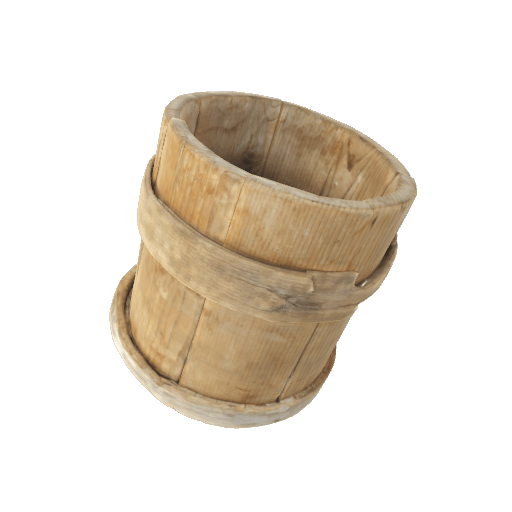Firkin
The firkin is a recipient which can be used for storing butter and various fats such as lard and tallow. Typically fitted with a lid, it is designed like a barrel: made by strapping together vertical slats of hard oak or ash wood together. The firkin lost its use with the popularization of butter moulds.
Lard is the most common fat used in cooking, but salted butter is also very popular. Dairy cows allow families to produce their own butter at home. To make butter, the cream is first left to separate from the fresh milk. After the cream is collected, it is churned until the fat clumps together and forms butter. The faster the butter is made, the finer the taste.
It is very difficult to preserve, especially during the summer. In fact, in Quebec, the poor preservation of milk was one of the main causes of infant mortality, until the introduction of sterilization in the 20th century.
To prevent the butter from going rancid in the firkin, it must be sealed off the ambiant air. To achieve this, the butter is covered with salt water, called brine. To improve the smell of the firkin, it is scalded with a mixture of water and plants, such as strawberry or raspberry leaves. The Lamontagne house has a small chamber, cooler than the others, used for the production and storage of milk products: the dairy.
References
Date: 19th century
Origin: North America
Owner: Site historique de la maison Lamontagne.
Sources:
Provencher, J., & Moussette, M. (1981). Le mobilier et le mode de vie des habitants de la Maison Lamontagne, à Rimouski-Est, à la fin du 18e siècle [The furnishing and lifestyle of the inhabitants of Maison Lamontagne, in Rimouski-Est, at the end of the 18th century]. Société rimouskoise du patrimoine.
Desloges, Y. (n.d.). Daily Life. Foodways. Virtual Museum of New France. Retrieved August 11, 2022, from https://www.historymuseum.ca/virtual-museum-of-new-france/daily-life/foodways/
